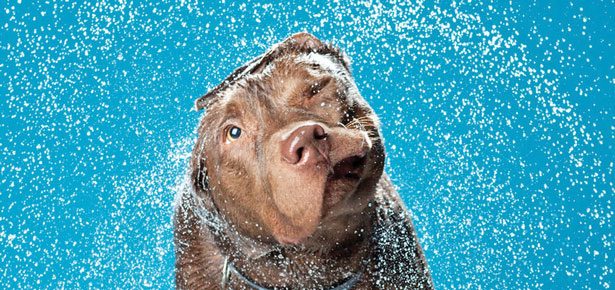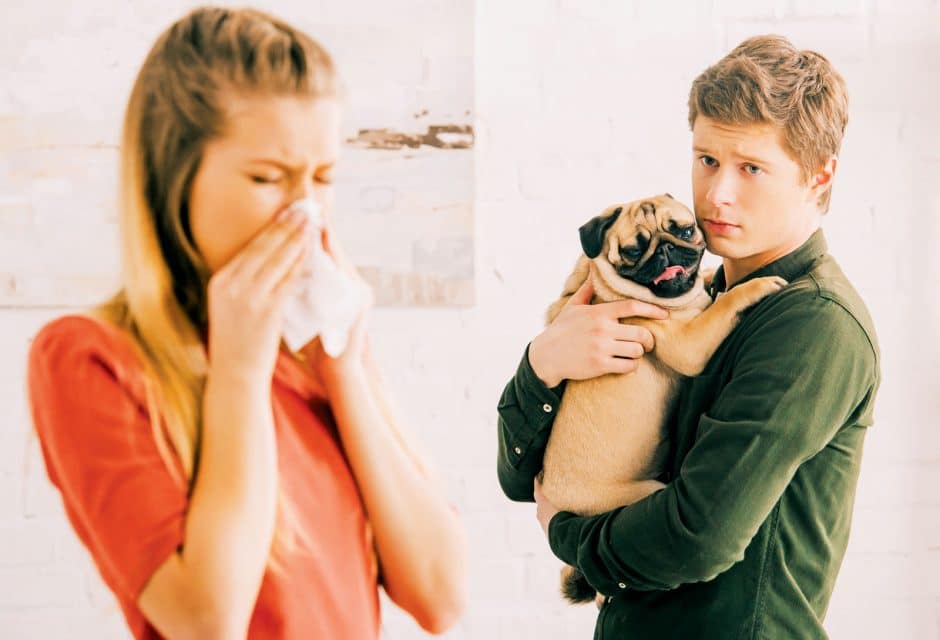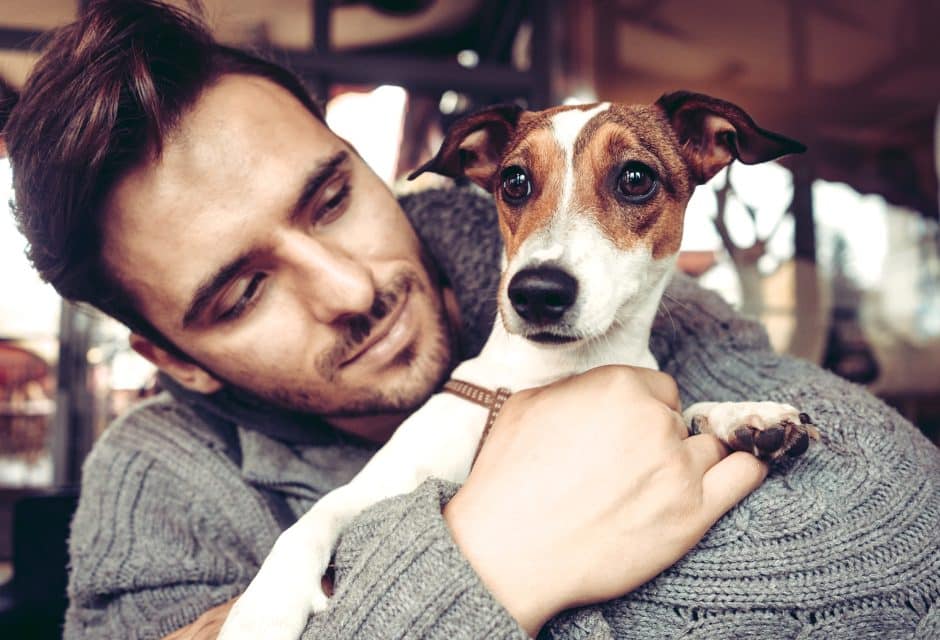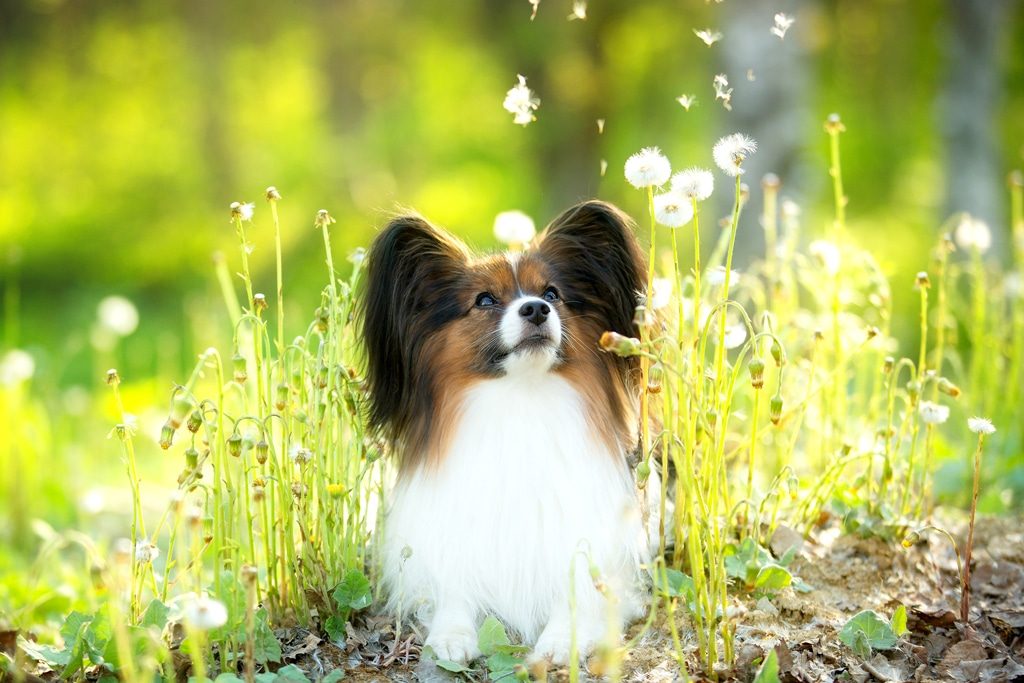
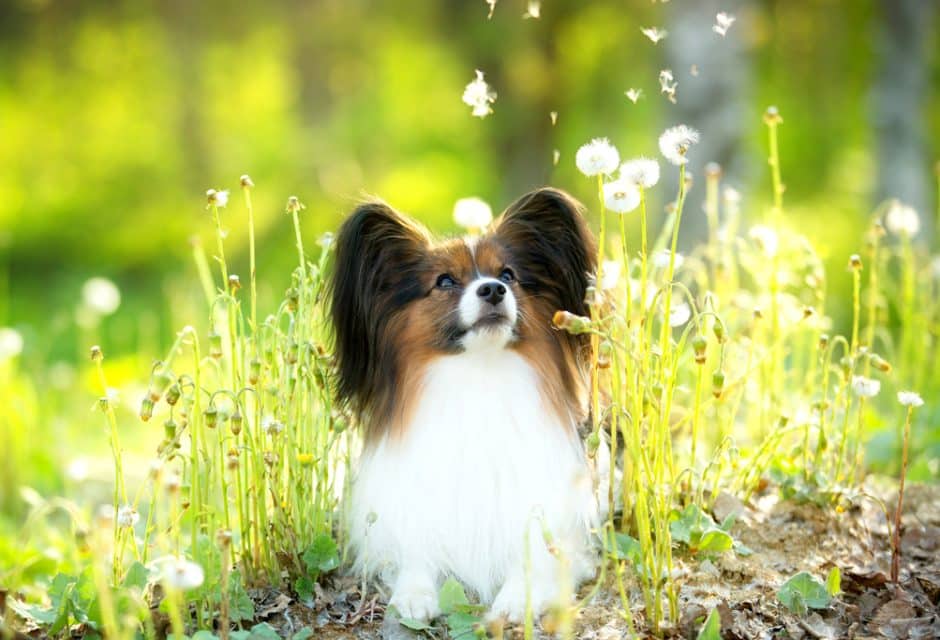
The Papillon
Social Butterfly

As the butterfly flits from one flower to another, sipping nectar here and carrying pollen there, always lovely, always graceful, so does the social butterfly move with beauty and ease from one social situation to another, enjoying the company of all, and adding charm to any soirée.
Truly, a more perfect description of the elegant and extroverted Papillon could not be found. In fact, although the name papillon, French for butterfly, is actually linked to the breed’s distinctive wide-spreading and wing-like ears, it could equally well refer to the Pap’s gregarious personality.
“Most Papillons will welcome new acquaintances as if they had been friends for decades,” writes F. Michael Truex in his book Papillon (Kennel Club: 2005).
This combination of butterfly-like beauty and breezy sociability has made the Papillon a favourite companion for at least six hundred years and the breed is well-documented in paintings dating back as far as the 14th century by such famous artists as Van Dyck, Rubens, Fragonard, and Goya. The little dog shown in the painting The Venus of Urbino by Titian (1538) is clearly a Papillon, little different in appearance (other than colour) from the 1999 Westminster Kennel Club Best in Show winner, Ch.Loteki Supernatural Being.
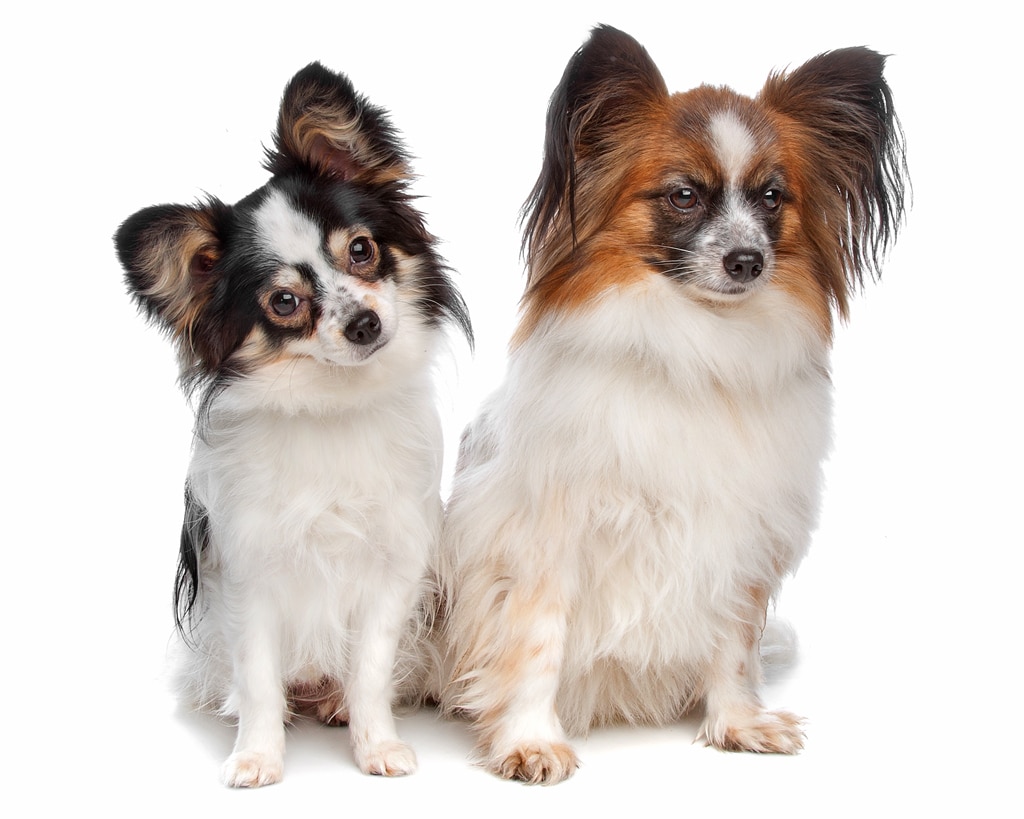
eriklam/Bigstock
King Henri III of France loved his Paps so much, he brought them to council meetings in small baskets carried around his neck. One story tells that when Henry received a visiting monk,the king’s Papillon, Lilene, reacted so ferociously that she had to be taken from the room. A short time later, the “monk” stabbed Henry to death. As he died, the legend reports, he criedout, “If only I had heeded Lilene’s warning!”
The tragic queen Marie Antoinette also owned the diminutive dogs, and after her death by guillotine, several of her pets were cared for in her home in Paris, a house subsequently known as “The House of Papillons.”
The breed currently ranks 37th in popularity according to the American Kennel Club (AKC) and has moved effortlessly in to the social milieu of the 21st century, appearing, for example, in a photo spread in Hello! magazine with pop idol Christina Aguilera, whose two beloved Paps answer to the anything but-elegant names of Chewy and Stinky.
The original Papillons had larger and lower ears than their modern counterparts, harkening back to their probable ancestor, the Toy Spaniel. As the erect-eared look became increasingly popular, the droop-eared variety of the breed was given the name Phalene (moth). Both ear types are accepted by the AKC today, and both may occur in the same litter.
Described as “fine-boned” in the breed standard, the Papillon is a dainty dog of 8 to 11 inches and from 3 to 6 pounds in weight, with a silky, flowing coat of any colour paired with white. Both ears and the coat around each eye must be coloured, not white, as white in these areas is linked to deafness. A white blaze down the face, white muzzle, and symmetrical markings on the head are preferred.
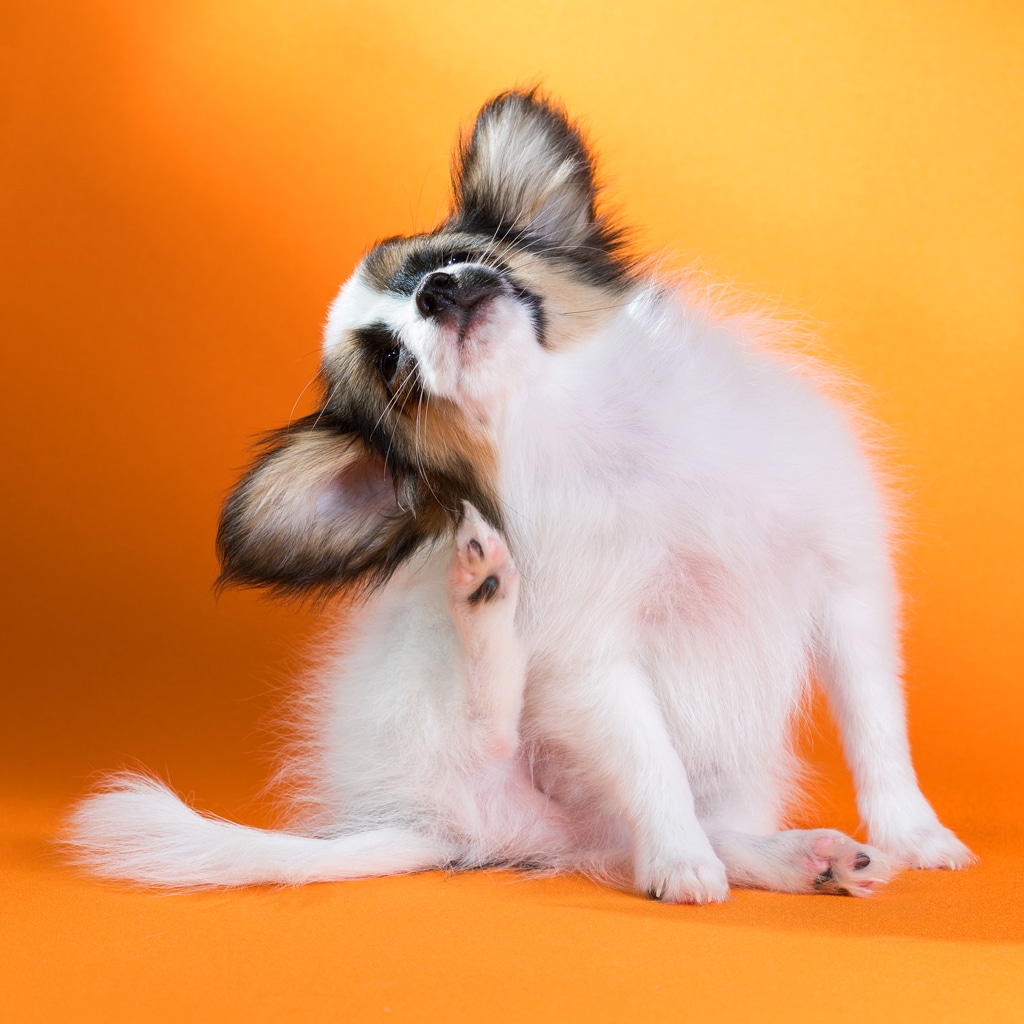
Laures/Bigstock
Hair fringing the ears is long and profuse, adding to the butterfly-wing look. Papillons do not have an undercoat, so shedding is minimal, and grooming consists of once- or twice weekly brushings with care taken that mats do not form in the ear fringes or in the “culottes”—the hair on the backs of the thighs.
This social butterfly has little time to waste being ill—she would hate to miss out on anything!—and the breed has few health problems. Patellar luxation, where the kneecap slips out of place, is sometimes a problem, and the breed is sensitive to anesthetics, so the Pap owner must be sure to discuss this issue with her veterinarian before allowing her Papillon to undergo surgery. Owners of this breed must also be constantly aware of their dogs’ diminutive size, both because tiny adventurers can slip through almost unnoticeable gaps in fences and because the spunky Papillon may try to play with any dog he encounters, no matter the size.
Despite his petite stature, however, the Pap is a keen and versatile participant in many activities, being the top-ranked toy breed in several canine sports and standing 8th in intelligence among all breeds, according to Stanley Coren, author of The Intelligence of Dogs (Bantam; 1994). Whether navigating the weave poles at an agility trial, putting nose to ground to track down that elusive glove, or strutting along at heel position during an obedience exercise, the Papillon is a ready competitor. The clever and cuddly Pap also makes an excellent hearing assistance or therapy dog, being always alert and quick to sense the mood of his companion.
With so much personality and adaptability wrapped in such a portable package, the Papillon is a go-anywhere, do-anything bon vivant, happy to share his joie de vivre with all.
» Read Your Breed For more breed profiles, go to moderndogmagazine.com/breeds
Join the newsletter and never miss out on dog content again!
"*" indicates required fields
By clicking the arrow, you agree to our web Terms of Use and Privacy & Cookie Policy. Easy unsubscribe links are provided in every email.

